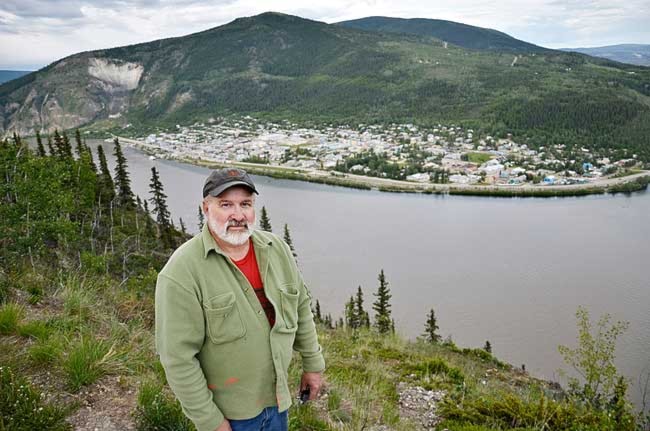Yukon’s search-and-rescue volunteers need training to pluck people off steep embankments and out of ice-choked or swift-running rivers.
So says John Mitchell, president of the Klondike Search and Rescue Association.
He recalls how, last autumn, he and other rescuers had to save a badly-battered man who had tumbled nearly half a kilometre down Moosehide Slide, the prominent gash in the hillside above Dawson City.
Among the RCMP, firemen, hamlet staff, nurses and lands department staff who attended, a handful had the necessary climbing skills to rescue the man. Mitchell counts that as lucky.
In the 1990s, the territory offered steep embankment rescue training to volunteers, said Mitchell. He reckons they still should.
The same holds for swift water and ice rescues.
“It’s kinda hard to ignore the Yukon River. It’s kinda hard to ignore the Klondike River. And it’s kinda hard to ignore the Moosehide Slide, because we pull one or two people out of there every year.
“We can stick our heads in the sand like northern ostriches. But it doesn’t make any bloody sense.”
But volunteer rescuers should focus on conducting ground and water searches for missing people, and to leave tricky rescues to others, said Michael Templeton, director of Yukon’s Emergency Measures Organization.
Usually, that means the RCMP.
Mounties don’t receive any mandatory training in specialized rescues when they’re posted to the Yukon. But some officers have tapped into an RCMP training fund to beef-up their rescue skills, said Sgt. Don Rogers.
A “large number” of officers recently took a basic water training course. And all Yukon Mounties recently received life jackets and throw lines.
But it would be up to individual Mounties to apply for the sort of specialized training that Mitchell wants.
For steep embankment rescues, RCMP are able to call staff at Kluane National Park with rope rescue training, said Templeton. He concedes it would take time for parks staff to travel to another community to attend a rescue.
That concerns Mitchell, given how “time is of the essence” during a rescue.
The territory usually has 15 search-and-rescue operations over a year, said Templeton. Most of these funds involve searches for missing people.
The government is conducting a three-year review of Yukon’s search-and-rescue operations. But Mitchell doesn’t have high hopes about this producing prompt changes. He wrote a letter to Templeton, outlining his concerns, nearly one year ago, and only received a response this month.
Cam Beemer, president of the Whitehorse Search and Rescue Organization, agrees the amount of training offered to volunteers has declined over the past five years. But, if he had his way, he’d see his volunteers receive training to track missing people.
Steep embankment rescues aren’t a big worry for him. The Whitehorse Fire Department is able to handle that, he said.
Five years ago, the territory organized spring and autumn joint training exercises for Yukon’s eight search-and-rescue teams, said Beemer. Not any more.
So the Whitehorse search-and-rescue group organizes its own training event. It depends on local restaurants to donate pizza and burgers.
The group applied for lottery funding, but it was denied on the grounds that they’re not a recreational organization.
Beemer sees search and rescue as bearing the brunt of broader government cutbacks. “It’s easiest to cut volunteers,” he said.
Mitchell is also miffed over how the annual spring meeting of search-and-rescue presidents hasn’t happened this year. But Templeton says the meeting’s been delayed, rather than cancelled. He expects it to be held in the autumn.
Contact John Thompson at
johnt@yukon-news.com.
